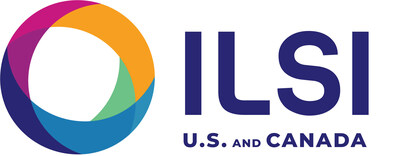A New Approach to Understanding Nutrient Intake: An ILSI US & Canada Framework
PR Newswire
WASHINGTON, Nov. 19, 2025
A New Framework developed by ILSI refines how to measure the quantity of nutrients from foods our bodies absorb and use, moving beyond food labels and total nutrient content.
WASHINGTON, Nov. 19, 2025 /PRNewswire/ -- A new paper published in Advances in Nutrition, "Framework for Estimating the Absorption and Bioavailability of Nutrients from Foods," outlines a method to measure how much of a food's nutrients the body actually uses. Developed by ILSI U.S. and Canada, the framework advances current practice by emphasizing usable nutrient intake rather than the total shown on food labels.
Authored by an international team of experts, the paper outlines how bioavailability, the amount of a nutrient the body absorbs, can be built into nutrient databases, food labels, and dietary assessment tools. The goal is to develop user-friendly prediction methods, or algorithms, that reflect a truer picture of nutritional value, helping consumers, researchers, and policymakers make smarter, health-supporting decisions.
"The current system of food labeling, which reports total nutrient content without considering bioavailability, has limitations," said Connie Weaver, PhD, Distinguished Professor at San Diego State University and chair of the ILSI expert committee. "This new framework addresses these gaps by adjusting nutrient values based on enhancers and inhibitors, offering a more realistic view of nutrient intake and ultimately paving the way for more personalized nutrition guidance."
Understanding Bioavailability: Beyond What's on the Label
Bioavailability varies widely across foods. For instance, vitamin C enhances iron absorption, while compounds like oxalates in spinach can limit calcium uptake. Yet bioavailability is not reflected in Dietary Reference Intakes, nutrient databases, food labels, or consumer nutrition tools. This gap can have real health implications, as people may believe they are meeting their nutrient needs when absorption inhibitors reduce the amount their bodies receive.
The new framework establishes a method for creating nutrient-specific algorithms that adjust for the various factors that influence absorption.
Practical Uses for Bioavailability Algorithms
These algorithms offer a range of potential uses, including:
- Integration into nutrient composition databases
- Application in research, such as food balance sheets or national dietary surveys
- Implementation in nutrient-tracking apps and consumer-facing nutrition tools
- Inclusion on food labels
As a proof of concept, ILSI U.S. and Canada is partnering with nutrient-tracking platforms to integrate the first open-access calcium bioavailability algorithm. This will help consumers, dietitians, and researchers better estimate how much calcium is actually absorbed from their diets.
"We're excited to expand this work beyond calcium," Dr. Weaver noted. "By making this information widely available—not only for research but for the public—we can help people understand how their diets influence actual nutrient intake and help inform policies that support nutrient needs across different populations."
The International Life Sciences Institute (ILSI) is a global, nonprofit federation dedicated to advancing emerging science and research to ensure foods are safe, nutritious, and sustainable. ILSI brings together experts from academia, government, industry, and other organizations to advance evidence-based science for health and well-being.
To learn more, contact research@ilsiuscanada.org
Follow us on LinkedIn: @ILSIGlobal
![]() View original content to download multimedia:https://www.prnewswire.com/news-releases/a-new-approach-to-understanding-nutrient-intake-an-ilsi-us--canada-framework-302619857.html
View original content to download multimedia:https://www.prnewswire.com/news-releases/a-new-approach-to-understanding-nutrient-intake-an-ilsi-us--canada-framework-302619857.html
SOURCE International Life Sciences Institute



